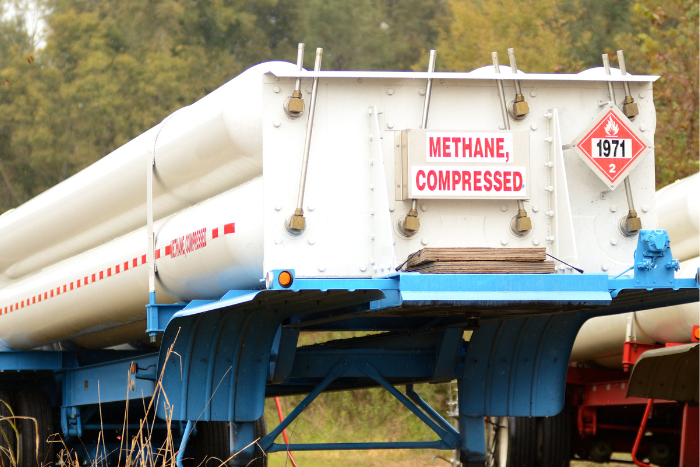The top 10 emitting countries were responsible for around 80 million tonnes of methane emissions from fossil fuels in 2023, two-thirds of the global total, with the US leading the chart
According to a new analysis by the International Energy Agency (IEA), the United States is the largest emitter of methane from oil and gas operations, closely followed by Russia. China is by far the highest emitter in the coal sector.
The analysis said that methane emissions from the energy sector remained near a record high in 2023, but substantial policies and regulations announced in recent months, as well as fresh pledges stemming from the COP28 climate summit in Dubai, have the potential to put them into decline soon.
Methane is responsible for almost a third of the rise in global temperatures since the Industrial Revolution, and the energy sector – including oil, natural gas, coal and bioenergy – is the second largest source of methane emissions from human activity. While methane in the atmosphere dissipates faster than carbon dioxide, it is a much more powerful greenhouse gas during its short lifespan. As a result, driving down methane emissions is one of the best ways to limit global warming and improve air quality in the near term.
Methane emissions on rise
The report said that the production and use of fossil fuels resulted in close to 120 million tonnes of methane emissions in 2023, a small rise compared with 2022. Another 10 million tonnes of methane emissions came from bioenergy, mostly from the traditional use of biomass for activities such as cooking.
The top 10 emitting countries were responsible for around 80 million tonnes of methane emissions from fossil fuels in 2023, two-thirds of the global total, with the US leading the chart.
The amount of methane lost in fossil fuel operations globally in 2023 was 170 billion cubic metres, more than Qatar’s natural gas production. Of the nearly 120 Mt of emissions that were tied to fossil fuels in 2023, it is estimated that around 80 Mt came from countries that are among the top 10 emitters of methane globally.
Methane emissions need to decline by 75%
To limit global warming to 1.5°C, a key goal of the Paris Agreement, methane emissions from fossil fuels need to decline by 75% this decade, the analysis said. It also said that fully implementing existing pledges on methane would deliver the majority, but not all, of the emissions cuts needed this decade to align with 1.5°C.
“A 75% cut in methane emissions from fossil fuels by 2030 is imperative to stop the planet from warming to a dangerous level. I am encouraged by the momentum we’ve seen in recent months, which our analysis shows could make an enormous and immediate difference in the world’s fight against climate change,” said Fatih Birol, executive director, IEA. “Now, we must focus on transforming commitments into action – while continuing to aim higher. Well known policies and existing technologies could reduce methane emissions from fossil fuels substantially. The IEA stands ready to help the energy sector meet its goals by deploying these measures, and we will continue to monitor progress – a key part of our wider efforts to ensure countries deliver on the energy promises they made at COP28.”
Nearly 200 governments agreed in Dubai to “substantially” reduce methane emissions by 2030, while significant regulatory initiatives were announced by Canada, the European Union and the United States around the time of the summit. New companies have also committed to action through the launch of the Oil and Gas Decarbonisation Charter, and more countries are joining the Global Methane Pledge – including, most recently, Azerbaijan, which will host COP29.
If all methane pledges made by countries and companies to date are implemented in full and on time, it would be sufficient to cut methane emissions from fossil fuels by 50% by 2030, the IEA’s new analysis finds. However, most pledges are not yet backed up by plans for implementation.
Interestingly, around 40% of methane emissions from fossil fuel operations in 2023 could have been avoided at no net cost, since the value of the captured methane was higher than the cost of the abatement measure.
Reducing methane emissions from fossil fuels by 75% by 2030 would require about $170 billion in spending, which is less than 5% of the income generated by the fossil fuel industry in 2023.
About The Author
You may also like
India to Expand Coal Power Capacity Until 2047 to Ensure Grid Stability and Energy Security
Rise in Fossil Fuel Burning is Making Floods Lethal in Asia
EU to waste billions on hydrogen pipelines in new PCI list, warns experts
Lula Pitches Fossil Fuel Phase-Out at COP30, But Can a Divided World Agree?
Fossil Fuels CO2 Emissions Hit Record in 2025 as Global Carbon Budget Nears Exhaustion

